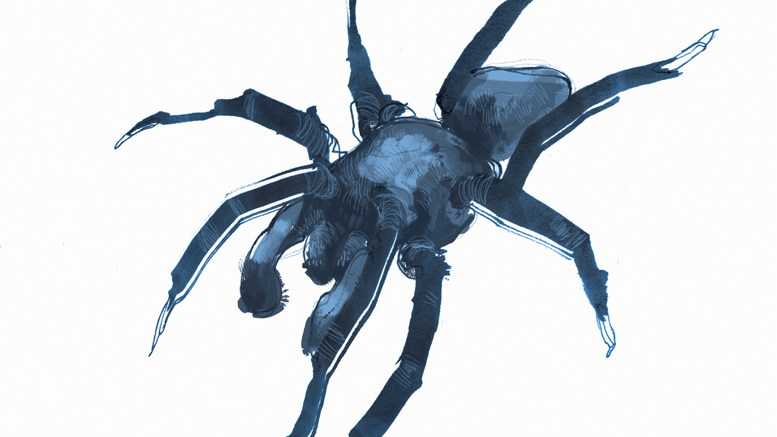Certain species of tarantulas display brilliant shades of blue on their bodies, although the colour is not produced by pigmentation.
Researchers from Ohio’s University of Akron and the Scripps Institution of Oceanography at the University of California have recently published a study in Science Advances investigating how and why these blue tarantulas exist.
When we see colours in nature, they are often the result of pigments – molecules that absorb certain wavelengths of visible light and reflect all other wavelengths back at your eyes, allowing you to perceive its colour.
For example, chlorophyll, which is abundant in most plants, doesn’t absorb green light due to its green pigmentation, and anthocyanin is responsible for the not-so-blue colour of blueberries.
Tarantulas do not rely on pigments to produce their blue exoskeleton. Instead, their colours are produced by carefully ordered nanostructures, which cause light to scatter and allow for certain colours of light to be produced and reinforced.
These same structures are responsible for the blue colour seen on butterflies and blue jays.
The researchers used high-powered electron microscopes to observe the organization of these nanostructures, which are found on specialized tarantula hairs. If you were to look past these hairs and focus on the surface of the spiders, you would see something rather dull and dark.
The researchers found that these structures are either multilayered, much like a crystal lattice, or ‘quasi-ordered’, much like a sponge.
The researchers looked through 53 arachnid genera – a taxonomic grouping used to classify organisms –and found that 40 of them had at least one species of blue tarantulas.
These select tarantula species tend to be a very specific shade of blue, from which there’s not a lot of variation.
Blue colour was independently developed at least eight times in different lineages in the evolutionary history of tarantulas. And yet, using the two mentioned ways of producing structural blue hues, somehow they all came upon the same shade. This is unlike the broader shades seen among birds and bugs.
And unlike birds and bugs, tarantula blues lack a characteristic shimmer that is seen in the other creatures. As far removed as this research might seem from practical applications, understanding this phenomenon could actually improve colour displays.
But why so blue? Well, the authors of the study concluded, we don’t really know.
What’s even more confusing is how the same shades of blue keep popping up even in tarantulas that developed the colour in different ways.
There are some ideas, though. And the researchers are pretty sure they know what is not a reason: sex.
Sexual selection is the sex-specific choice of a mate, often due to physical features. In organisms with structural colours, sexual selection often results in a large variety of colours. But this doesn’t seem to happen with blue tarantulas.
Tarantulas have horrible vision and their colour perception of blue is particularly abysmal. Furthermore, one would also expect tarantulas to flaunt their sapphire-stuff during courtship if these colours were sexually selected, but this behaviour has not been observed.
This leads the researchers to believe that these colours are favoured by natural selection for some currently-unknown reason. Perhaps, they argue, blue is a happy-medium signal colour that is dull enough to avoid predators and flashy enough to attract prey.




